Tibes Ceremonial Park
We left Ponce and looked for Tibes Ceremonial Park. We got lost. We had no clear directions and no signs but we persevered and finally found it. We were the only visitors, as it was a weekday, so we got a private tour.

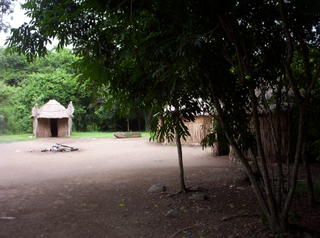
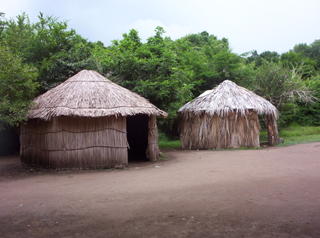
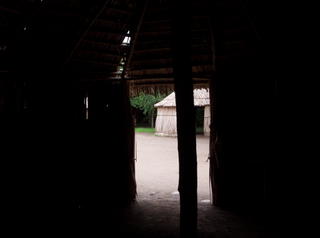
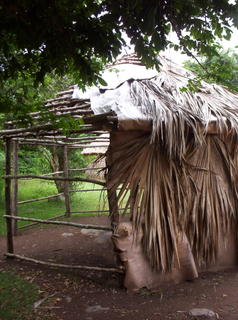

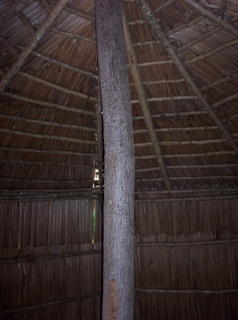



























The Parque de Bombas de Ponce (Old Ponce Fire Station) was built as the main exhibit pavilion for the 1882 Exhibition Trade Fair. Architect Lt. Col. Maximo Meana of the Spanish Army designed the pavillion; he later served as Ponce's mayor. In 1885, the building was dedicated as Ponce's official firehouse--a function which it served for more than 100 years. The woodframe, Gothic structure exhibits a Moorish influence and is painted in bands of red and black. Today, the building serves as a museum honoring and commemorating Ponce's firemen.
Cristo Chapel was built to commemorate what legend says was a miracle. In 1753 a young rider lost control of his horse in a race down this very street during the fiesta of St. John's Day and plunged over the precipice. Moved by the accident, the secretary of the city, Don Mateo Pratts, invoked Christ to save the youth, and he had the chapel built when his prayers were answered. Today it's a landmark in the old city and one of its best-known historical monuments. The chapel's gold and silver altar can be seen through its glass doors. Because the chapel is open only 2 days a week, most visitors have to settle for a view of its exterior.
The Parque de las Palomas (pigeon park) is located at the top of the city wall, this park overlooks the restored La Princesa Jail, now a government office with an attractive art gallery. The park is the perfect spot from which to enjoy a magnificent view of the harbor, city and mountains.


 D is actually very happy. She wanted to catch one to keep.
D is actually very happy. She wanted to catch one to keep.


 Looking down over the park wall.
Looking down over the park wall. After the fray: Argh! Ahoy there, mateys!
After the fray: Argh! Ahoy there, mateys!
San Juan Gate, built around 1635, several blocks downhill from the cathedral, was the main point of entry into San Juan if you arrived by ship in the 17th and 18th centuries. The gate is the only one remaining of the several that once pierced the fortifications of the old walled city. For centuries it was closed at sundown to cut off access to the historic old town..
The city walls around San Juan were built in 1630 to protect the town against both European invaders and Caribbean pirates. The city walls that remain today were once part of one of the most impregnable fortresses in the New World and even today are an engineering marvel. Their thickness averages 20 feet (6m) at the base and 12 feet (3.6m) at the top, with an average height of 40 feet (12m). At their top, notice the balconied buildings that served for centuries as hospitals and also residences of the island's various governors. Between Fort San Cristóbal and El Morro, bastions were erected at frequent intervals. The walls come into view as you approach from San Cristóbal on your way to El Morro

 Around Old San Juan and the old city walls you see many cats like the one below. A local policewoman patrolling around San Juan Gate informed us that cats were brought by the Spanish to kill Plague-spreading rats. A few hundred of their descendants live in the area today and are cared for by government funds and employees.
Around Old San Juan and the old city walls you see many cats like the one below. A local policewoman patrolling around San Juan Gate informed us that cats were brought by the Spanish to kill Plague-spreading rats. A few hundred of their descendants live in the area today and are cared for by government funds and employees.


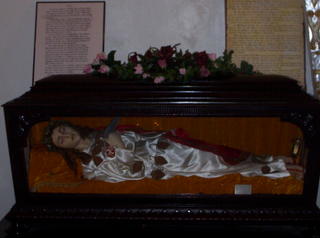
The tomb of Juan Ponce de Leon.


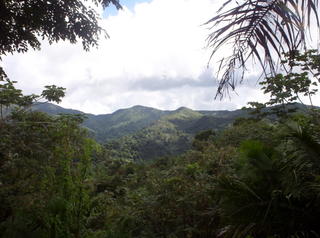 This is the sign for the water fall on the main road. Next time we hope to hike the trails where there are more water falls but we didn't think we were really up for that this time.
This is the sign for the water fall on the main road. Next time we hope to hike the trails where there are more water falls but we didn't think we were really up for that this time.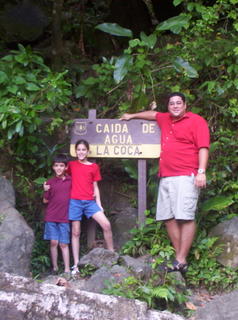
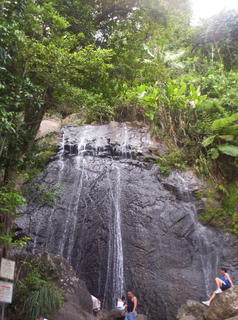 This is the sign for a large tower by the main road of El Yunque.
This is the sign for a large tower by the main road of El Yunque.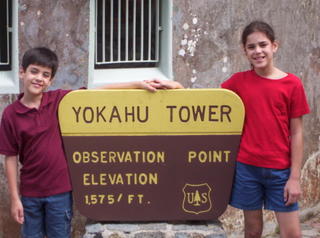 View from the tower.
View from the tower.
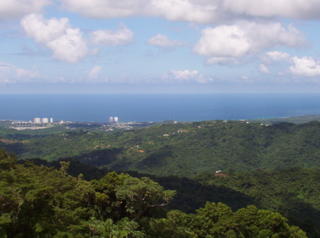
 Looking down.
Looking down.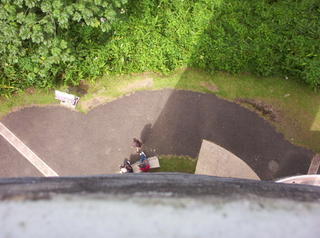 S at the trail head.
S at the trail head.